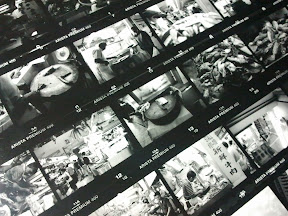Then the "Minamata" book by W. Eugene Smith and Aileen M. Smith arrived. The images were made by a Minolta. Some fish-eye, wide, normal and telephoto lenses were used. In the book, none of the images had that Leica sharpness that I witness that day. It got me thinking. One of my personal favorite image was made with a $50 Canonet QL17 GIII. Damn image had motion blur and is far from sharp. I dropped the idea of purchasing a Leica reluctantly.
I came to the realisation: I am not better than my gear.
2012, we look at this:
 |
| MTF Chart. Like hell I'd know how to read it. |
 | ||
| Photo Credit: W. Eugene Smith |
Then it hits like a 3 ton truck. The image that I saw from the 75mm Summicron wasn't even impressive other than the sharpness and the excellent contrast. It was cropped way too tight, leaving the head floating without a body. Composed far to the right, not even a great portrait.
The elusive search for ultimate sharpness suddenly lost its appeal. The focus should be on telling stories---even if all I can afford is the camera on my phone.




